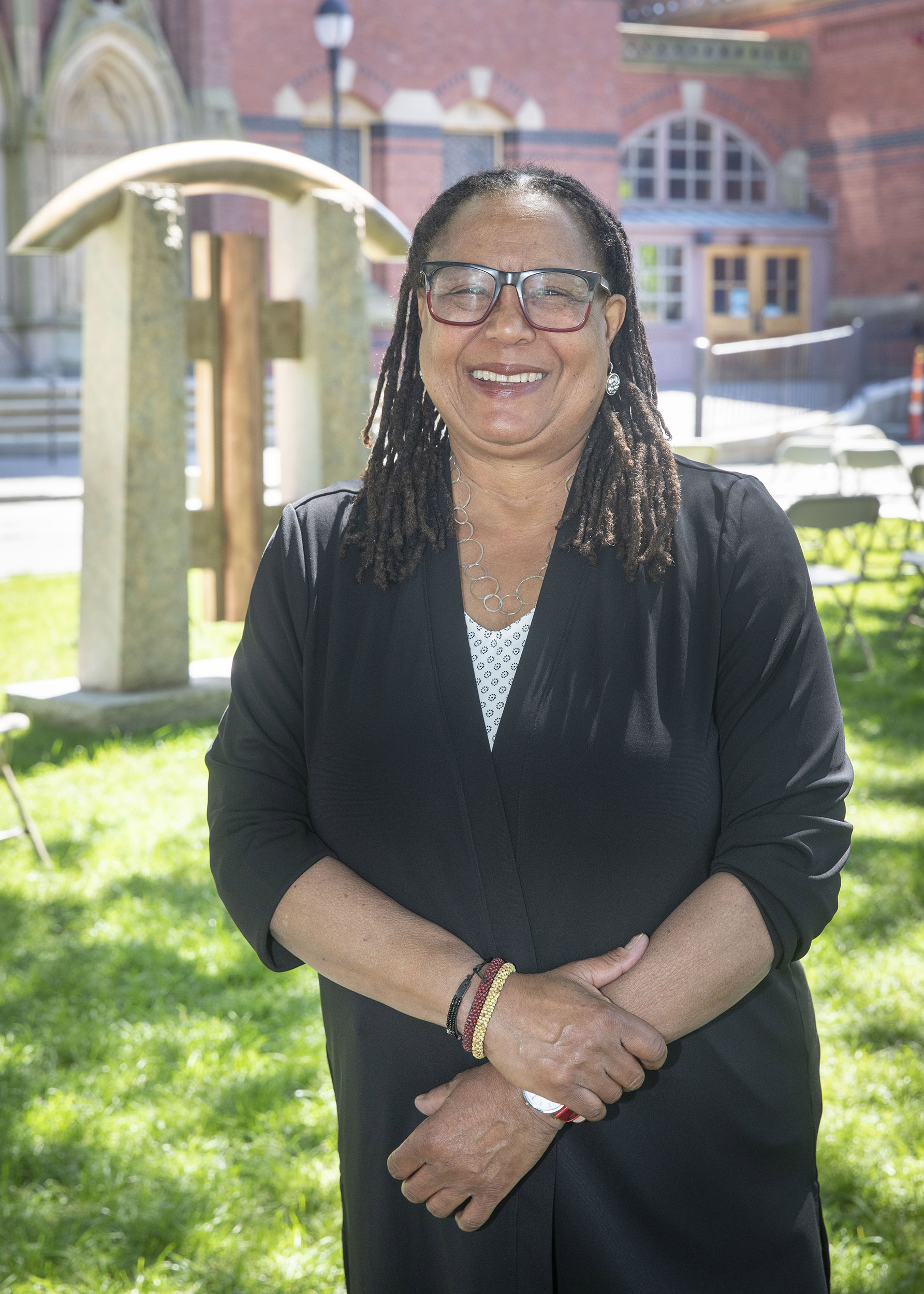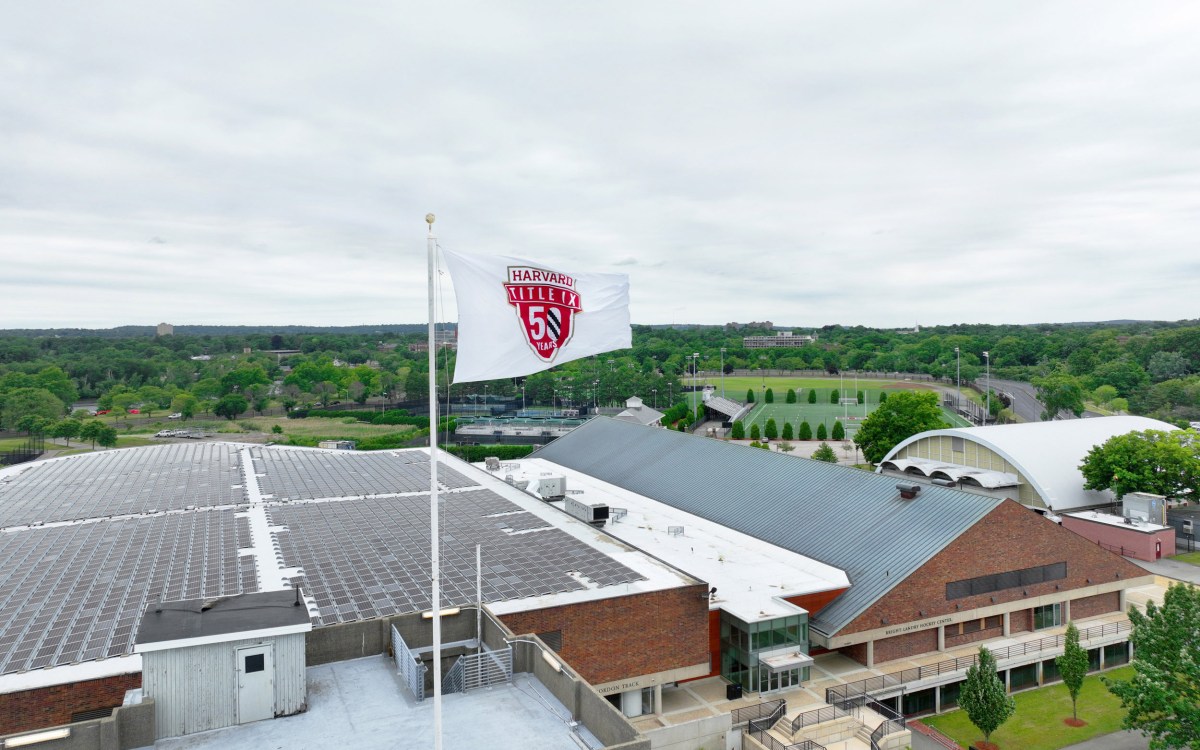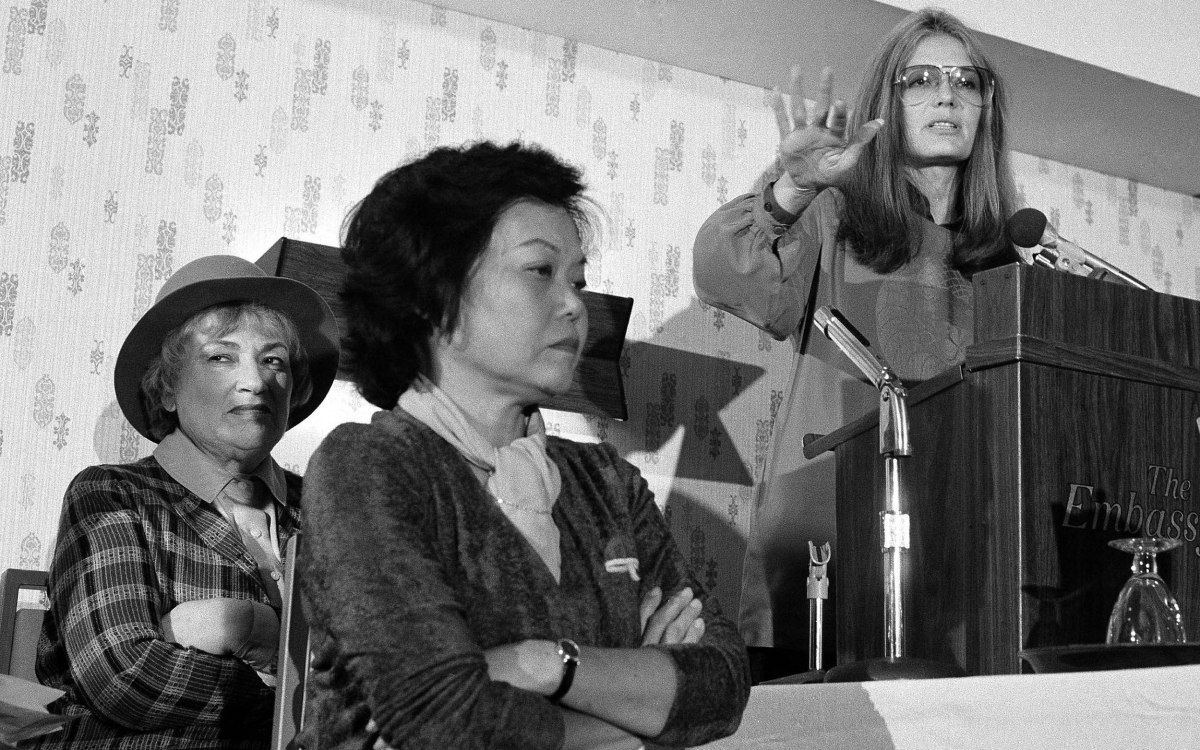Women in STEM need more than a law
Scientists have seen gains the past 50 years, but culture remains an obstacle

“The attitudes and the culture” in science, technology, engineering, and mathematics “haven’t changed as much as they absolutely have to,” said Evelynn Hammonds, the chair and professor of the history of science at Harvard.
Kris Snibbe/Harvard Staff Photographer
In the 1970s, as Evelynn Hammonds walked the halls of MIT’s physics department on her way to a Ph.D., faculty, students, and staff kept asking her the same question:
“Hi, Shirley, how’s your work going?”
Her name, of course, was Evelynn, not Shirley. A few years before, Shirley Jackson, the second African American woman to receive a Ph.D. in physics in the United States, had been the only Black woman in the department. But she was gone by the time Hammonds, also the only Black woman in MIT physics, arrived.
“As an African American woman, I carried the double burden,” Hammonds, the chair and professor of the history of science at Harvard, recalled in a recent interview with the Harvard Museums of Science and Culture. “The first two years, I just felt like I was constantly fighting to have people take me seriously.”
After she earned her degree, Hammonds took a leave of absence to grapple with questions physics couldn’t answer: “Where are the women? What’s going on?”
Today, on the 50th anniversary of Title IX, which prohibits sex-based discrimination at educational institutions that receive federal funding, she’s still asking why there aren’t more women in science, technology, engineering, and mathematics. “The attitudes and the culture haven’t changed as much as they absolutely have to,” she said.
Most people associate Title IX with anti-discrimination initiatives in athletics and efforts to reduce sexual harassment. But it was also intended to increase women’s access to higher education. This “big hammer,” as the chemist Debra Rolison calls it, could be used to put universities on alert: Fail to increase the representation of women in STEM, and the government might take away your federal funding.
“No money from the feds is death at the door,” said Rolison, who has been fighting for women’s equality since her male cousins excluded her from a baseball game when she was 5 years old. “I have never, ever appreciated that double standard,” she said. “And every time I can say or do something about it, I do.”
For decades, Rolison, who is head of the Advanced Electrochemical Materials section at the Naval Research Laboratory, has given talks to raise awareness about gender inequities in STEM. When words haven’t been enough, she has sought to force change by using the “big hammer” Title IX represents.
Since the law’s enactment, women have made some gains in science and engineering — they’ve gone from representing just 8 percent of STEM workers in 1970 to 27 percent in 2019. But men still dominate, making up half of all U.S. employees but 73 percent of the STEM workforce. A report published in 2018 made clear that sexual harassment was still an everyday reality for many women in science. Two years later, the American Association of University Women (AAUW) found that women in science earned about $15,000 less than their male colleagues.
“It’s not like Title IX changed anything. It’s been the women’s movement, right? It’s the people who have been working nonstop on institutional reform. Some law doesn’t really change anything.”
Londa Schiebinger, John L. Hinds Professor of History of Science at Stanford University
“The gender gap that exists in the STEM workforce cannot be blamed on differences in academic preparation,” the National Coalition for Women and Girls in Education wrote in a report released this month. Research has shown that women are no less capable than men in science and mathematics. But, according to the AAUW, external factors, like a lack of role models, cultures that tend to exclude women, and persistent stereotypes about women’s intellectual abilities, reinforce a wide gender gap. Even today, teachers and parents underestimate girls’ STEM abilities from a young age. From a historical perspective, at least in certain fields, we seem to have regressed.
“In 1700, 14 percent of German astronomers were women,” said Londa Schiebinger, who earned her Ph.D. in history from Harvard and is now the John L. Hinds Professor of History of Science at Stanford University. As a student, she couldn’t stop wondering: “What happened to all the women?”
The were pushed out, she found, and men brandished biased science to justify keeping them out. Take the Harvard-trained physician Edward Hammond Clarke, who practiced in the late 1800s.
“You’re in a culture where, on any given day, somebody might think you were a secretary, or a janitor, or anything but a graduate student in physics.”
Evelynn Hammonds, Barbara Gutmann Rosenkrantz Professor of the History of Science
Clarke, Schiebinger noted, claimed that as a woman’s brain grows, her ovaries shrink — clear-cut evidence, he said, that a woman’s rightful place was in the home, bearing children. The first drawings of the female skeleton, also from the 19th century, depicted (inaccurately) small skulls and large pelvises — more evidence, male scientists thought, that a woman’s body was made for procreation. In the 1920s, men blamed female hormones for their inferior minds. A century later, when Schiebinger was a graduate student at Harvard, she still heard men argue that women were intellectually deficient and ill-suited for science.
The gender gap isn’t just about percentages or fairness; a lack of women (and other minorities) in a field affects the quality of the science, as Schiebinger has discovered.
Women are 47 percent more likely to be injured in a car crash, she said, because crash test dummies are just smaller versions of the male anatomy. “It’s a shrink-it and pink-it sort of thing,” Schiebinger said. Medical devices fail more often for women. Pulse oximeters, for example, which measure blood oxygen levels, tend to miscalculate these levels in women and people of color, putting them at risk of not receiving emergency care (an especially pernicious threat during the pandemic). Large datasets don’t have equal representation of women or different ethnic groups. Search algorithms, for example, show more high-paying jobs to men because that’s what their underlying data tells them: men earn more.
“It’s not like Title IX changed anything,” Schiebinger said. “It’s been the women’s movement, right? It’s the people who have been working nonstop on institutional reform. Some law doesn’t really change anything.”
A male-dominated culture — along with its unconscious biases and rewards for cutthroat pursuit of money and prestige — is still considered one of the biggest and most stubborn barriers women face in STEM, said Schiebinger.
Hammonds would agree.
“You’re in a culture where, on any given day, somebody might think you were a secretary, or a janitor, or anything but a graduate student in physics, so you had to live with that,” she said. “It was made very clear to us by some people that we didn’t fit, that we didn’t belong, that we were only there because of affirmative action, that we could never be successful. We were constantly finding those attitudes.”
Some people argue that women choose to avoid STEM careers because of long hours that can intrude on family responsibilities. It’s true, Rolison noted, that child care and parental leave are critical benefits that ensure women can have a family without sacrificing career ambitions. But, she said, the particular demands and realities of a life in science are not the primary problem. “There’s plenty of work done to show that, no, it’s the culture. It’s always the culture. It’s not the low pay; it’s not the long hours; it’s the culture.”
To fix the culture, Schiebinger argues for a coordinated approach. Courses should teach awareness of social issues; journals and funding agencies shouldn’t accept research that doesn’t consider gender and sex; big hammers like Title IX should be used as levers to force stubborn institutions to do better.
“These have to be structural solutions. It’s not just getting this woman or that woman,” she said. “You gotta do it everywhere. Start in the womb, I always say.”







